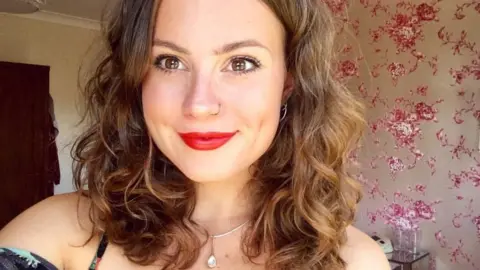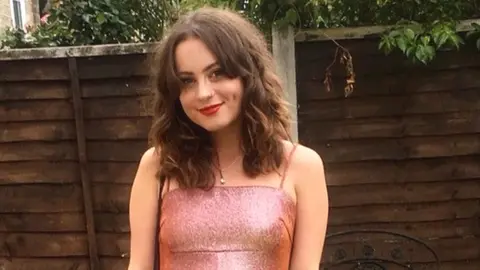Epilepsy: 'I'm not daydreaming Miss, I'm having a seizure'
 BBC
BBC"When I was younger my teachers thought I was naughty and 'away with the fairies'. But I was having absence seizures," says Olivia Salvati, 21.
"It's not like daydreaming - it's like having a horrendous nightmare that leaves you feeling completely drained."
Olivia found that her absence seizures - a type of epilepsy - meant she was often perceived as not concentrating.
To raise awareness, she is fronting a campaign by the charity Young Epilepsy to help educators recognise the signs.
The charity says most schools in the UK will have at least one student who has epilepsy and that teachers should be aware that signs can often go unnoticed for many years.
In a survey of 507 young people who experience absence seizures - sometimes called "petit mals" - or their parents, the charity found one third were unhappy with the support on offer at school, college or university.
The poll also suggests:
- more than four in five (81%) children and young people with absence seizures fall behind in the classroom
- 60% have trouble taking part in sports and other outdoor activities
- 55% avoid social situations
- 46% are made to feel embarrassed by their classmates
- 41% are made to feel embarrassed by teachers and other staff
Olivia's absence seizures were diagnosed when she was 11. She was also diagnosed with tonic-clonic and myoclonic seizures at the age of 14.
"It's like a daydream - you blank out for 30 seconds to a minute. They're really hard to identify. You've got no idea it's happening and you come round.
"I have other types of epilepsy seizures too, but absence seizures are the worst for me because they're not obvious."
She says that while she didn't experience bullying as such, she often felt excluded by her peers.
"I got lots of little comments like 'You can't come along because of your epilepsy and we want you to be ok' so I often felt excluded.
"And teachers have so much on their hands, they haven't got the time to deal with you."
What does the charity say about its campaign?
Carol Long, CEO of Young Epilepsy says: "Parents and teachers should be mindful that absence seizures often go unnoticed for many years.
"By spotting a few tell-tale signs, it's in their power to get a proper diagnosis before a child's wellbeing and education are affected."

Professor Helen Cross, The Prince of Wales's Chair of Childhood Epilepsy, adds: "The most commonly recognised symptoms of epilepsy are shaking uncontrollably and falling to the ground.
"However, absence seizures are one of the most common forms of epilepsy in children.
"Parents and teachers need to know how to spot it, to help prevent young people from struggling socially and educationally.
"It is also important to obtain an accurate diagnosis. Thankfully most children living with absence seizures respond very well to treatment."
How would I spot the signs of an absence seizure?
During an absence seizure, those affected have a sudden loss of consciousness for a short period of time.
Young Epilepsy says symptoms can include:
- staring into space and not responding to anything - this could be mistaken for daydreaming
- stopping unexpectedly in the middle of a sentence or activity
- being unable to recall what has taken place during this time.
What advice does Olivia offer to those with a recent diagnosis?
Olivia, who is now in her third year at university, says that while it takes time to work out the best medication and dosage for each individual, managing seizures does get easier over time.
"No matter how difficult it is now, it does get better.
"Go to the people who really care about you - doctors, friends, helplines."
She also recommends being up front about the condition, rather than keeping it quiet.
